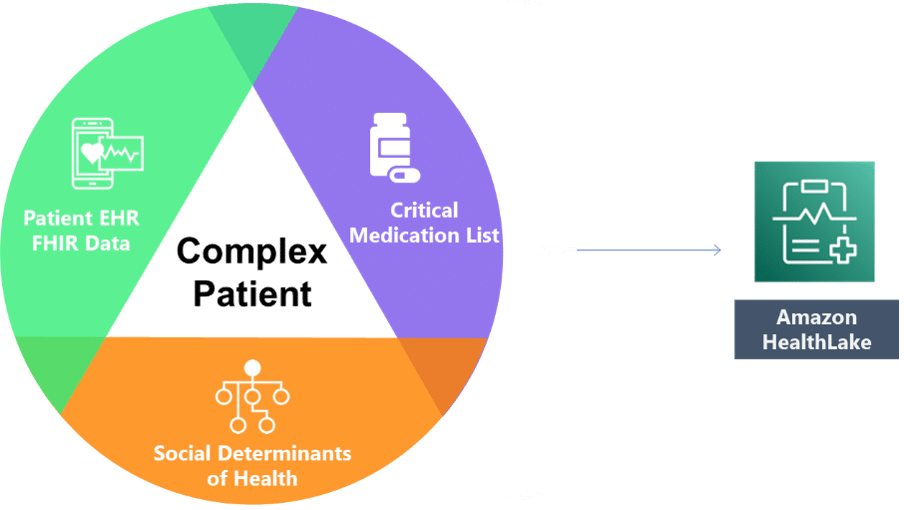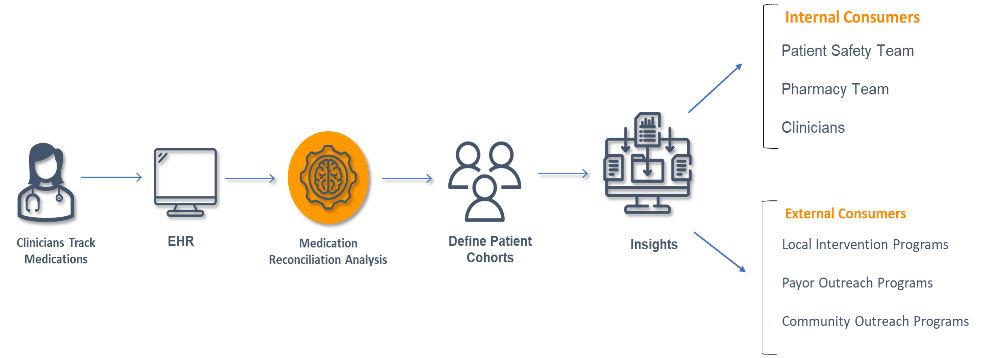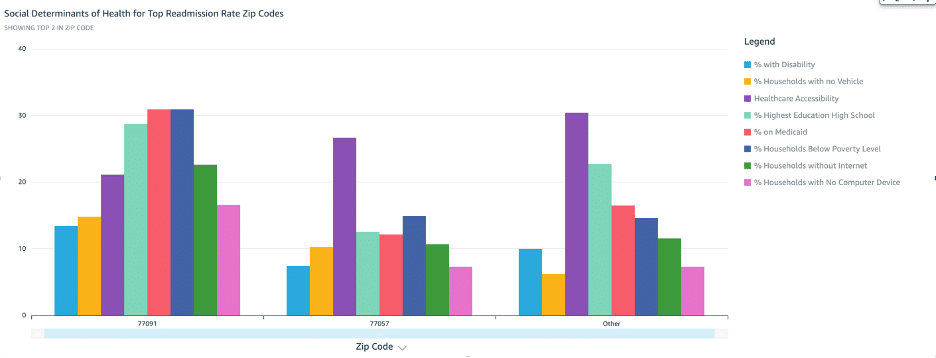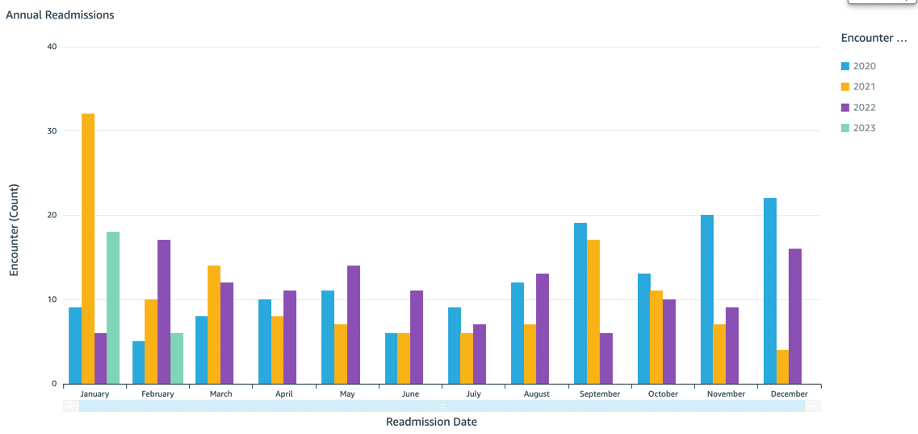Discovering ways to reduce hospital readmissions has been a focus for hospitals for well over a decade. The Affordable Care Act (ACA) passed in 2012 included a provision called the Hospital Readmission Reduction Program to incentivize hospitals to reduce readmissions. Enabling the ability to track and analyze readmissions effectively is critical to understanding the root cause of readmissions and defining interventions to address the root cause. Pariveda is developing solutions leveraging AWS HealthLake to help hospitals gain insights into the patient population and analyze readmissions.
Why is it important to reduce hospital readmissions?
Improving patient outcomes and reducing costs are the key metrics for addressing hospital readmissions. It is estimated that 27% of readmissions could be prevented with proper communication between healthcare providers and patients. The appropriate level of communication is complicated by several factors, inclusive of the Social Determinant of Health, which can profoundly impact patient outcomes during the transition of care to a home or residential care setting.
SDOH indicators have a broad impact on health outcomes and health equity
Social Determinants of Health (SDOH) can provide additional data points that will factor into evaluating risks associated with a specific patient cohort. Health analytics tied to electronic health records (EHRs) and health information exchanges (HIEs) can be leveraged to understand the root cause of readmissions.
For medically complex patients, the availability of resources can be challenging, and the risk of negative patient outcomes and subsequent readmission increases substantially for those patients with limited access to healthcare facilities, lack of access to reliable transportation, and economic instability.
For example, patients who have been identified as medically complex, have high-risk medication requirements, and have limited support may experience more issues with transition in care, including difficulty understanding discharge instructions, which could lead to Adverse Drug Events.
Identify risk factors for readmission using EHR data
Hospitals can use real-time data and predictive modeling to identify risk factors for readmission. By looking at population health data from the EHR or HIE, hospitals can evaluate common risk factors for readmission and identify patients who meet these criteria for classification as high-risk patients. For complex, high-risk patients, such as those who are taking medications with a higher risk of ADEs, hospitals may emphasize patient outreach interventions when a patient is discharged or transferred to proactively support care coordination.
Track readmission rates for complex patients based on the discharge medication list
Pariveda has leveraged AWS HealthLake to track readmission rates for Medication Complex patients as an extension of the Medication Reconciliation Service Offering, which uses machine learning models to reduce discharge errors.

Monitoring process effectiveness
High readmission rates for complex patient populations are indicative of the need to improve the quality of care of the patient. A key part of understanding the effectiveness of the interventions identified and instituted is to analyze the data to identify trends and patterns in readmission rates for high-risk patients. Utilizing AWS HealthLake, hospitals can quickly identify and track their high-risk patient cohorts and define interventions that can help to ensure patients have optimal outcomes. Insights from the data will guide corporate actions at scale, determining where specific operational changes and interventions will have the most value.
Enhanced analytics will inform resource allocation decisions, change workflows, and determine when and where interventions matter most. The information can be shared with both internal and external actors to help improve patient outcomes.

Dashboard and analytics
Analytics dashboards can be built with AWS Quicksight to provide insights into the readmission rates over a specified 7-day, 30-day, and YOY perspective to monitor the effectiveness of patient interventions. Enriching the data with SDOH for the defined patient cohort by zip code provides hospital administrators with key data points to define patient outreach programs to support patients with transitions to care in specific communities. With this enhanced dataset and insight into a vulnerable patient cohort, the patient safety teams and administrators have an opportunity to team up with community outreach programs in those targeted zip codes to improve patient outcomes.


Leveraging technology solutions to improve patient safety
Digital health solutions like AWS HealthLake can enable closer monitoring and enable access to services to ultimately prevent ADEs and reduce readmission rates. Providing technical solutions that help to identify and monitor high-risk patients post-discharge when they are most vulnerable is key to improving patient outcomes. Digital health programs that engage patients with chronic diseases will have a significant positive impact on patients providing tangible intervention to manage chronic disease conditions and manage the transition of care.





















